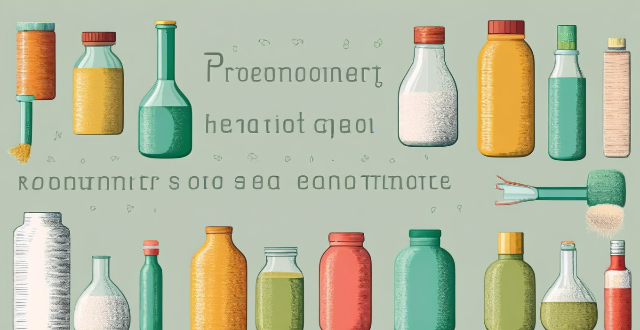The text provides a summary of common sources of harmful chemicals in household products, such as cleaning products, air fresheners, plastic products, and personal care products. It then offers advice on how to avoid these chemicals by reading labels carefully, choosing eco-friendly options, making your own cleaning products, buying from trusted brands, using natural air fresheners, avoiding plastic whenever possible, and educating yourself about new research. By following these steps, you can create a healthier home environment for yourself and your family.

Common Sources of Harmful Chemicals in Household Products
There are several common sources of harmful chemicals in household products. Some of the most common ones include:
- Cleaning products, such as bleach and disinfectants, which can contain toxic substances like chlorine and ammonia.
- Air fresheners, which often contain volatile organic compounds (VOCs) that can cause respiratory problems.
- Plastic products, such as food containers and toys, which may contain BPA or other harmful chemicals.
- Personal care products, such as shampoos and lotions, which can contain parabens and phthalates.
How to Avoid Harmful Chemicals in Household Products
To avoid harmful chemicals in household products, you can take the following steps:
1. Read labels carefully: Look for products that are labeled as "natural," "organic," or "non-toxic." Avoid products that contain known harmful chemicals, such as BPA, phthalates, and parabens.
2. Choose eco-friendly options: Look for products that are made from recycled materials or that have minimal packaging. Choose products that are biodegradable or compostable.
3. Make your own cleaning products: You can make your own cleaning products using simple ingredients like vinegar, baking soda, and lemon juice. This way, you can control exactly what goes into your cleaning products.
4. Buy from trusted brands: Look for brands that have a reputation for being environmentally friendly and transparent about their ingredients.
5. Use natural air fresheners: Instead of using artificial air fresheners, try using essential oils or natural scents like lavender or citrus.
6. Avoid plastic whenever possible: Choose glass or metal containers instead of plastic ones, and avoid using plastic bags and wraps whenever possible.
7. Educate yourself: Stay informed about new research on harmful chemicals in household products, and make informed choices based on the latest information.
By taking these steps, you can reduce your exposure to harmful chemicals in household products and create a healthier home environment for yourself and your family.